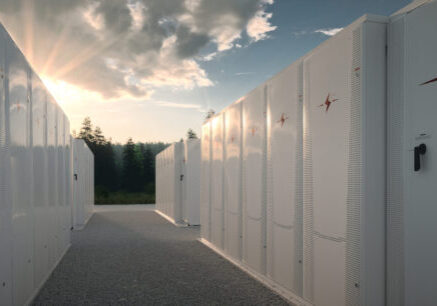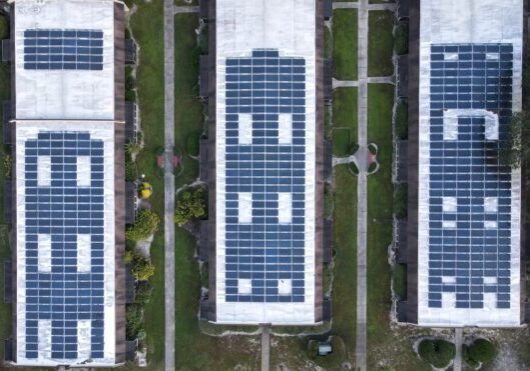July 30, 2015
Should Utilities Own Energy Storage?
By Seth Mullendore
Energy storage is a difficult resource to pin down. When it’s charging it can be an electrical load. When it’s discharging it can be a generator. Energy storage can be a demand response resource. It can provide instant power to relieve grid congestion. This versatility is part of what makes energy storage such a varied and valuable asset.
This versatility also leads to an important question:
What role should utilities play in ownership of energy storage resources?
A strong case can be made for treating energy storage deployed as a distribution system resource as a natural utility asset. But what if that same resource discharges energy to participate in utility calls for frequency regulation? Or to fill a need for generation in order to meet peak demand on a hot summer day? Should a utility be allowed to own a dispatchable resource that could be in direct competition with independently owned energy resources?
This is primarily a concern in deregulated states like Texas, New York, and Pennsylvania and partially deregulated states like California. In deregulated markets, utilities are prohibited from owning generation and transmission assets. Regulated utilities, on the other hand, are vertically-integrated, meaning that they own or control the entire flow of electricity from generation to the customer meter. Even in regulated markets, where there is little controversy over utilities owning storage resources located directly on the transmission and distribution system, the question still remains as to whether utilities should have the ability to own and control customer-sited, behind-the-meter storage systems.
One approach to the question of ownership is to look at what’s best for the power system as a whole. On one side, a level playing field that encourages competition between distributed and centralized storage resources will tend to promote innovation and drive down market prices – a vote against utility ownership. On the other, storage deployment at locations and scale optimal to the power system will tend to produce the most efficient use of resources – a vote for utility ownership, as utilities are the party most informed of grid needs and positioned to deploy resources throughout their territory.
How about looking at some of the pros and cons of utility ownership?
Pros:
- Capacity to accelerate the energy storage market by achieving economies of scale
- Knowledge of power system to optimize location, size, and timing of storage deployment for maximum benefit
- Ability to integrate storage into long-term, system-wide resource planning
- Direct integration and coordination with other grid resources
Cons:
- Potential for market manipulation: stifling competition, growth, and innovation
- Inherent familiarity and access to customers could create unfair market advantage
- Rate-basing energy storage investments could drive down market value of services
- Regulatory limitations of rate-based investment process
- Little to no incentive for utility optimization of system, particularly through deployment of small-scale, distributed resources
Based on these points, an argument could be made to support either side of the utility ownership question. However, a lack of utility incentives for optimizing the power system through strategic deployment of smaller distributed resources and limitations involved in the process of rate-basing investments tends to bend the debate towards encouraging independent ownership.
So, what are states doing?
Well, different states have proposed different solutions to the energy storage ownership dilemma.
Texas treats energy storage as a generation resource, effectively barring transmission and distribution utilities from owning storage assets. Texas utility Oncor attempted to alter this limitation on storage ownership. In 2014, the utility commissioned a report expounding on the system-wide benefits of storage and laying out the case for utility ownership for the greater good. So far, the state legislature has made no move to change the electricity system rules.
California has proposed a different approach, enacted through its ambitious 1.3 gigawatt energy storage mandate. The mandate allows for utility ownership of energy storage assets but limits utilities from owning more than 50 percent of storage located within each segment of the power system: transmission, distribution, and customer-sited. While the mandate explicitly states that utility can own energy storage resources, it encourages utilities to consider procuring all forms of ownership, including third-party, customer, and joint ownership of systems.
New York, through its Reforming the Energy Vision (REV) initiative, has taken yet another approach. Due to market power concerns over utility ownership of distributed energy resources, including storage, the New York Public Service Commission (PSC) has barred utilities from owning these resources under most conditions. The PSC decision includes three exceptions to the rule barring utility ownership: 1) Utility ownership is allowed for energy storage and generation sited on utility property, as long as it is directly integrated into distribution services; 2) The utility may own distributed resources where markets are not adequately serving the needs of low-income communities; and 3) utility ownership is allowed for the purposes of demonstration projects.
In some regulated regions, utilities are exploring ownership of energy storage assets on both the utility- and customer-side of the meter. So, based on proposed states policies, utilities either can, cannot, can but only half the time, or cannot, except maybe sometimes, own energy storage. Evidently, this is a tricky issue to sort out.
What’s the bottom line then?
There are some legitimate concerns over utility ownership of energy storage resources, particularly distributed behind-the-meter resources, and there are valid reasons to include utilities in the deployment process. While utilities may theoretically have the capacity to invest in large-scale deployment of energy storage resources, the process of advancing new rate-based investments is constrained by its potential cost impacts on customer bills, and by a sometimes politically charged regulatory environment. These limitations could significantly restrict the level and speed of energy storage deployment that utilities are capable of pursing. This type of scenario has already played out in several slow-moving utility initiatives for solar.
An open, competitive market, guided by fair and transparent utility pricing signals, has the capacity to be much more adept at deploying energy storage at a market advancing pace. The New York REV process comes closest to proposing a well-balanced approach between utility involvement and limitations on utility ownership. Earlier this week, New York regulators released a paper outlining the second phase of the REV process, which focuses on ratemaking and utility business models. The paper identifies some of the challenges inherent in encouraging utilities to support the deployment of distributed resources owned by other entities that could chip away at utility profits. The paper also discusses the need for a decoupling of utility earnings from customer energy consumption. Only time will tell if New York’s balanced approach and transition towards increasingly market-based utility compensation will foster a healthy competitive environment under which energy storage development can thrive.
***
This article was also featured on Renewable Energy World.














